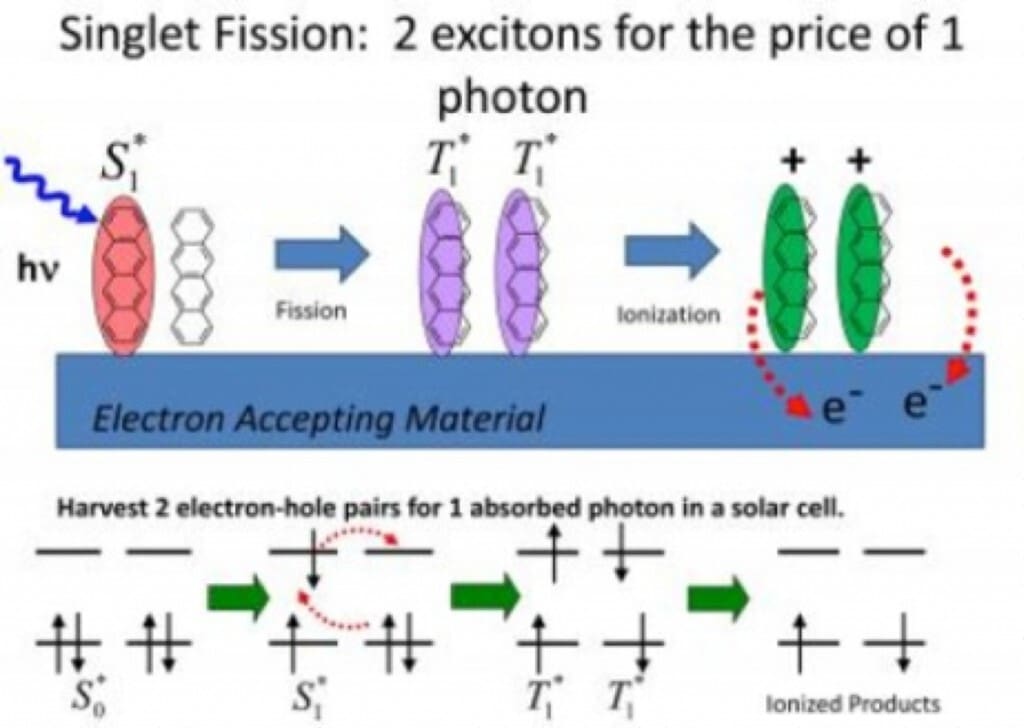Research conducted by the University of California (UC) – Riverside proposes an innovative method for pushing commercial solar cell efficiencies past 30%.
The process, known as ‘singlet fission’, allows for a doubling of the electric charge generated by high‑energy light. This area of research has also been pioneered by MIT and University of Cambridge.
The most commonly used solar cells are made of crystalline silicon. They generate electricity by absorbing all the energy of one packet of light (called a ‘photon’) and converting it into one electron. These generated electrons then add up to become the current extracted by a solar cell.  However, photons possess varying amounts of energy based on the wavelength (or ‘colour’) of light and can only be absorbed by silicon if it possesses energy above a lower limit called the ‘band gap’ energy. And to make matters worse, any excess energy above the ‘band gap’ which a photon possesses cannot be used to generate other electrons and is wasted in the form of heat. Until now.
However, photons possess varying amounts of energy based on the wavelength (or ‘colour’) of light and can only be absorbed by silicon if it possesses energy above a lower limit called the ‘band gap’ energy. And to make matters worse, any excess energy above the ‘band gap’ which a photon possesses cannot be used to generate other electrons and is wasted in the form of heat. Until now.
What is significant about singlet fission is that the process allows for the creation of two electrons for each high-energy photon. This effectively doubles the potential current generated by high-energy sections of the light spectrum and allows for more efficient solar energy generation. Initial estimates by UC Riverside state that singlet fission “has the potential to boost solar cell efficiency by as much as 30%”. Christopher Bardeen, a professor of chemistry at UC Riverside, noted that “[recent work has] already demonstrated an organic photovoltaic cell with more than 100 percent external quantum efficiency based on this effect. It may be possible to integrate this effect with [silicon solar cells] and use it to raise their efficiencies.”
The research is in its very early stages and is still being understood on a fundamental level. At the moment, it is far from commercial application but is surely a technique to keep an eye out for in future PV developments.
The materials currently used to demonstrate singlet fission are cheap organic compounds and are not expected to add significantly to PV manufacturing costs. A 30% boost in cell efficiency would lead to a reduction in PV module costs of approximately 25% and a decrease in balance of systems costs, which is all good news for Australian PV consumers looking to pay less for their PV systems.
Top Image Credit: Science Daily
© 2014 Solar Choice Pty Ltd